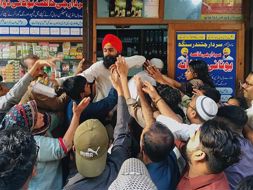Why Men Rape An Indian Undercover Investigation by Tara Kaushal. HarperCollins. Pages 303. Rs399
Book Title: Why Men Rape An Indian Undercover Investigation
Author: Tara Kaushal
Ranjit Powar
With a reported count of 106 rapes daily, (forget about the greater number of unreported ones), Tara Kaushal’s book investigates answers to the urgent question — why men rape? She conducted an extensive undercover investigation to grasp the socio-psychological genomes that go to sequence the profile of a rapist, a daring venture in a country ranked as one of the most unsafe for women. Tara’s investigation included travelling to the houses of nine men chosen from different regions, religions and socio-economic strata to meet and interview them and their families under the guise of producing a film. Digging deep into the depths of their early life experiences, including their relationship with their parents, education, peer-group influences and gender precepts, she explored “the configuration of gender construction, dynamics and hierarchies including the agency of women.”

Some interesting and somewhat obvious facts came up through the investigation — boys were raised to believe that they were privileged and entitled to have their way while girls exist to serve and please. Most of the rapists were themselves victims of violence and sexual abuse in early years, developing an association between violence and power and poor moral internalisations. The author finds a cataclysmic relationship between social class and caste, anger, power assertion, toxic masculinity and low self-esteem, all of which play on the rapist’s psyche to culminate in crimes like rape. Her investigations and conjectures cover pretty much the vast range of social, cultural, economic, emotional, mythological and existential factors that may be precursors to rape.
India is a poor country with huge disparities in wealth distribution, high rates of unemployment, large migration of rural population to urban areas and status hierarchies delineated by caste, education, religion, language and gender. It creates a large section of people who are struggling with feelings of inadequacy, failure, impotency, disillusionment, anger and frustration against an unfair system. The author has done well to shift the focus from criminalising the perpetrators of rape to the large, underlying web of patriarchal, mythological and existential influences embedded in the collective psyche of a whole culture and society, shaping misogyny, inhuman and
violent behaviour towards women.
The book is an excellent treatise of all that we must correct in the larger social milieu to make India a safe place for women to live in. Investigating a larger sample would have made the results empirically more reliable and representative. One feels the absence of narratives of the rape victims and their perspective about the rapists. The book is nevertheless appreciable and relevant to the present rape pandemic and highlights the fact that much more must be done than merely apprehending and persecuting the rapists. We need to tackle the many heads of this hydra, which builds up a rapist block-by-block, bit by bit.














